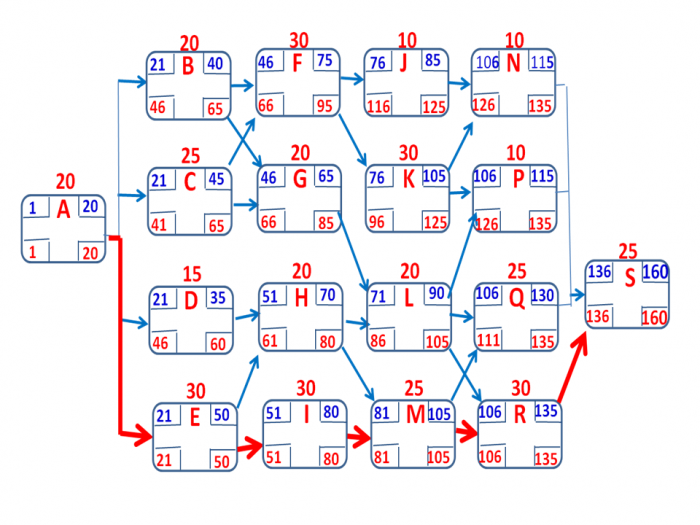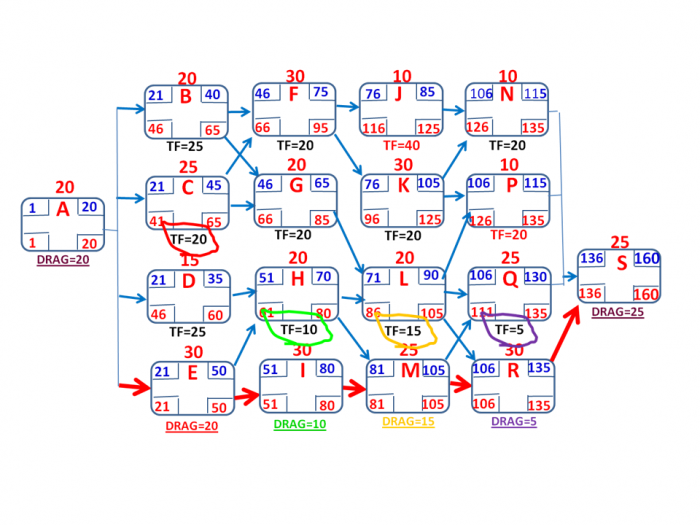Rafael Davila's riddle on the joke-and-trivia page gave me an idea. How about a simple little CPM exercise?
Below is a critical path network logic diagram consisting of just 18 activities. The critical path is the bottom path (outlined in red). All relationships are FS, and the forward and backward pass numbers have all been filled in.
The questions:
- Which activity or activities has/have the most total float, and how much?
- Which activity or activities has/have EXACTLY fifteen units of free float?
- How many units of time is each critical path activity ADDING to the total project duration of 160 units (i.e., what is the drag of each activity)?
A suggestion: time yourself and see how long it takes you to figure out each answer. Post your answers here, if you like. I'll give those who would like to do the exercise a chance, and then post my answers here in a few days. (Or alternatively, you can get the answers from the software. The two packages that compute critical path drag are Spider Project and the Sumatra Project Optimizer from Sumatra.com. But even if you use software, try computing the answers "manually" first!)
Obviously, this is a fairly simple exercise, with just eighteen activities. But if enough people like this, I have lots of other, much tougher, exercises from my graduate classes that I can post.
Fraternally in project management,
Steve the Bajan

















Replies